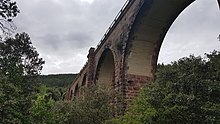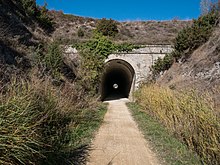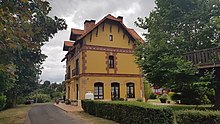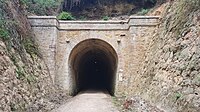Vitoria – Estella railway line
| Vitoria-Estella | |||||||||||||||||||||||||||||||||||||||||||||||||||||||||||||||||||||||||||||||||||||||||||||||||||||||||||||||||||||||||||||||||||||||||||||||||||||||||||||||||||||||||||||||||||||||||||||||||
|---|---|---|---|---|---|---|---|---|---|---|---|---|---|---|---|---|---|---|---|---|---|---|---|---|---|---|---|---|---|---|---|---|---|---|---|---|---|---|---|---|---|---|---|---|---|---|---|---|---|---|---|---|---|---|---|---|---|---|---|---|---|---|---|---|---|---|---|---|---|---|---|---|---|---|---|---|---|---|---|---|---|---|---|---|---|---|---|---|---|---|---|---|---|---|---|---|---|---|---|---|---|---|---|---|---|---|---|---|---|---|---|---|---|---|---|---|---|---|---|---|---|---|---|---|---|---|---|---|---|---|---|---|---|---|---|---|---|---|---|---|---|---|---|---|---|---|---|---|---|---|---|---|---|---|---|---|---|---|---|---|---|---|---|---|---|---|---|---|---|---|---|---|---|---|---|---|---|---|---|---|---|---|---|---|---|---|---|---|---|---|---|---|---|
|
Estella station reception building
| |||||||||||||||||||||||||||||||||||||||||||||||||||||||||||||||||||||||||||||||||||||||||||||||||||||||||||||||||||||||||||||||||||||||||||||||||||||||||||||||||||||||||||||||||||||||||||||||||
| Route length: | 69 km | ||||||||||||||||||||||||||||||||||||||||||||||||||||||||||||||||||||||||||||||||||||||||||||||||||||||||||||||||||||||||||||||||||||||||||||||||||||||||||||||||||||||||||||||||||||||||||||||||
| Gauge : | 1000 mm ( meter gauge ) | ||||||||||||||||||||||||||||||||||||||||||||||||||||||||||||||||||||||||||||||||||||||||||||||||||||||||||||||||||||||||||||||||||||||||||||||||||||||||||||||||||||||||||||||||||||||||||||||||
| Dual track : | No | ||||||||||||||||||||||||||||||||||||||||||||||||||||||||||||||||||||||||||||||||||||||||||||||||||||||||||||||||||||||||||||||||||||||||||||||||||||||||||||||||||||||||||||||||||||||||||||||||
| course | |||||||||||||||||||||||||||||||||||||||||||||||||||||||||||||||||||||||||||||||||||||||||||||||||||||||||||||||||||||||||||||||||||||||||||||||||||||||||||||||||||||||||||||||||||||||||||||||||
|
|||||||||||||||||||||||||||||||||||||||||||||||||||||||||||||||||||||||||||||||||||||||||||||||||||||||||||||||||||||||||||||||||||||||||||||||||||||||||||||||||||||||||||||||||||||||||||||||||
The Vitoria – Estella railway was a narrow-gauge railway between Vitoria-Gasteiz in the Basque Autonomous Community and Estella-Lizarra in Navarra , Spain .
history
The line was built by the state between 1920 and 1927 and inaugurated on September 23, 1927. The engineer responsible for the project was Alejandro Mendizabal Peña . The operation led the Ferrocarril Vasco Navarro . The line was closed in 1967 .
route
Technical parameters
The route was 69 km long and built in meter gauge.
Route and stations
Vitoria-Norte
Vitoria-Norte train station was one of two train stations in Vitoria-Gasteiz and the starting point for the route to Estella-Lizarra.
Olárizu
The station Olárizu was a major train station, since it both by the Ferrocarril Vasco Navarro and by the wide-gauge trains of the RENFE was approached. Goods were reloaded here. In addition to the reception building, there was a goods hall, a residential building and a vehicle hall. After the shutdown, all buildings except the vehicle hall were lost.
Otazu
The structural ensemble of Otazu station has been completely preserved, the buildings have been restored and are now used for different purposes.
Aberasturi
The architectural ensemble has also been completely preserved in Aberásturi station and the buildings have been restored and are now used for different purposes.
Andollu
Andollu was the starting point for a branch line to Estíbaliz . In Andollu the structural ensemble has been completely preserved, in Estíbaliz, however, only a ruin remains.
Troconiz
The Trocónniz train station had a residential building that was converted into a school after the line was closed.
Gauna
Structural remains of the former Gauna train station have not been preserved.
Erenchun
There are no structural remains of the former Erenchun train station either .
Ullíbarri-Jáureg
In Ullíbarri-Jáureg there was also a railway substation . Like the other structures at the station, it has not been preserved. The Laminoria tunnel is behind the train station. The Laminoria tunnel is 2,200 m long and the longest of the route. It crosses the Sierra de Andía , which separates the Zadorra basin from the Ega basin. The construction of the tunnel took two years. The railway line now begins to rise. This is followed by the Trocóniz tunnel and the Huecomadura tunnel.
Laminoria
Laminoria station gained importance over time due to increasing mining, which carried its products away by rail.
Cicujano
The reception building of Cicujano is three-story with a tower and now serves as the town hall of the Valle de Arraia .
Maestu
At Maestu the route crosses the watershed and it goes down into the Ega Valley. The Laorza tunnel is located near Maestu.
Atauri
The route crosses the Berrón River over the Peña Salada bridge and a little further with the Atáuri viaduct, which consists of seven arches. This is followed by the tunnel of the same name and the village of Atáuri . Its train station is near the tunnel exit, the former reception building is in ruins. The route then crosses the Berrón River again, this time over the bridge of San Saturnino, whose construction and foundation problems made it necessary to relocate the route.
Antoñana
The Fuenfría tunnel is followed by a long straight line that ends in the town of Antoñana , whose train station had a second, railway-owned substation.
Fresnedo
Two kilometers after the Fresnedo station , the line crossed the Ega with the Tarifa Bridge again.
Santa Cruz de Campezo
The route continued to Santa Cruz de Campezo and crossed the Ega River over the 10 meter high and five-arched bridge of Santa Cristina. Santa Cruz de Campezo was a large train station. A railway depot was located here . The reception building was a three-wing system, there were two loading ramps, one covered and one uncovered, storage rooms for vehicles and accommodation for the staff. Only one storage hall remains from this complex after eight possibilities for re-use of the other buildings had been examined but rejected.
Zuñiga

After the line had crossed the Orradicho stream , the trains passed the Confín flyover and entered Navarre. The first train station in Navarre was Zúñiga |. The route crossed the Ega again two kilometers later, here on the largest bridge of the entire route, the Puentarrón or the Arquijas Viaduct. It is 30 meters high and consists of nine arches. It was built of concrete , which was clad with stone. This is followed by the Arquijas tunnel with a length of 1,245 meters. The exit of the tunnel opens out near the next train station.
Acedo
From the Acedo - Los Arcos train station , the two-story reception building with an additional attic has been preserved. This was followed by the Secón flyover, the Granada tunnel and a few other flyovers.
Ancín
The third substation on the line was located next to the station building in Ancín station . All station buildings have been preserved, the reception building now serves as the town hall and the former operations center as a service building for the communal swimming pools.
Mendilibarri
No further information is available about the former Mendilibarri (also: Granada ) train station .
Murieta
The station building of Murieta train station is three- story with an octagonal tower. It was converted after the route to the town hall was closed.
Zufia
No further information is available on this breakpoint.
Zubielqui
Zubielqui was the last station before Estella, followed by a bridge and the tunnel of the same name. The route crosses the Ega one last time on the Los Llanos bridge.
Estella
The reception building of the Estella train station is a magnificent neo-Romanesque building. The station system was completed by loading ramps and parking facilities. The station building is the only thing that has survived from the railway systems in Estella. Today it is used as a bus station, for municipal offices and tourist information.
architecture
The reception buildings along the route, which were also designed by Alejandro Mendizabal Peña , are characterized by an eclectic style that also draws on local and historical elements. The architecture of the reception buildings in Vitoria-Norte, Otazu, Aberasturi, Andollu, Trocóniz, Erenchun, Gauna, Laminoria and Antoñana is reminiscent of English bourgeois villas. They have gable roofs, are covered with flat tiles and have large eaves. The walls are plastered, the lintels of the windows and doors framed with ashlar. However, each of the reception buildings is individually designed. Olárizu, Maeztu and Santa Cruz de Campezo train stations resemble country houses. The roofs have a slight pitch, are covered with monk and nun , also with large eaves. The doors and windows are designed with arches and one or two towers are added.
swell
- NN: Information board at the reception building in Estella . Seen in 2019.
- NN: Por la Via Verde del Vasco-Navarro [leaflet]. OO, before 2019.
- Tourist Office: Estella-Lizarra [map with explanations]. OO, before 2019.







